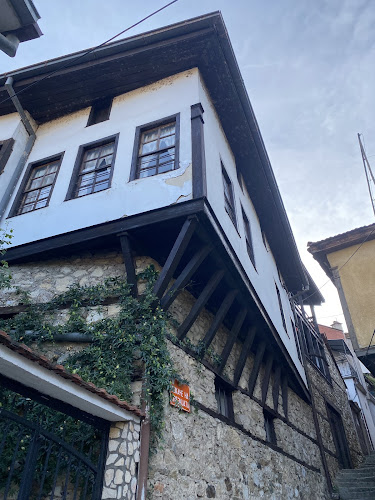
About Kosta Solev – Racin Memorial House
Description
The Kosta Solev - Racin Memorial House stands as a testament to one of Macedonia's most influential literary figures. Y'know, I was genuinely moved when I first stepped into this intimate museum space - there's something really special about walking through the rooms where such an important cultural figure once lived and worked. The museum captures the essence of Racin's life as a poet, revolutionary, and social activist in the early 20th century.
Inside, you'll find an impressive collection of Racin's personal belongings, original manuscripts, and photographs that tell the story of his life and creative journey. The building itself, with its traditional architecture, adds another layer of authenticity to the experience. I particularly love how they've preserved his writing desk - it's almost like you can imagine him sitting there, penning his famous works.
But what really gets me is how this place does more than just display artifacts. It's actually a living tribute to Macedonian literary heritage. The museum regularly hosts cultural events, poetry readings, and educational programs that keep Racin's legacy alive and kicking. And while it might not be the biggest museum you'll ever visit, every corner holds significance.
Key Features
• Original manuscripts and first editions of Racin's works • Personal artifacts and belongings from the poet's life • Period-accurate room reconstructions showing early 20th century living conditions • Photography collection documenting Racin's life and times • Regular cultural events and literary gatherings • Educational exhibits about Macedonia's literary history • Traditional architectural elements of the historic building • Detailed timeline of Racin's life and achievements • Archive of historical documents related to his revolutionary activities • Exhibition space for temporary displays about Macedonian literatureBest Time to Visit
From my experience, the sweet spot for visiting is during spring (April-May) or autumn (September-October). The weather's just right then, and you won't have to deal with summer crowds or winter's chill. Plus, these seasons often feature special cultural events and temporary exhibitions that really enhance the experience.
I'd suggest planning your visit for mid-morning on a weekday - that's when the lighting is perfect for appreciating the exhibits, and you'll have more space to absorb everything at your own pace. Just keep in mind that some cultural events happen in the evenings, so check the schedule if you're interested in catching one of those.
How to Get There
Getting to the memorial house isn't too tricky, though I remember getting a bit turned around my first time. It's located in a historic neighborhood, and while you might need to walk a few minutes from the nearest parking spot, trust me - the short walk through the old streets adds to the experience.
If you're using public transport, several local bus lines stop within walking distance. Honestly, I prefer taking a taxi - most local drivers know exactly where it is, and it's usually pretty affordable. Just make sure to have the name written down in both English and Macedonian to avoid any confusion.
Tips for Visiting
Okay, so here's what I've learned from my visits: definitely bring your camera, but check about photography permissions first - some areas might have restrictions. Consider joining a guided tour if available - the stories they share really bring the place to life. I once spent an hour just chatting with a guide about Racin's influence on modern Macedonian literature!
Give yourself at least an hour to explore properly. And while the museum isn't huge, wearing comfortable shoes is still a good idea - you'll be standing and walking around quite a bit. Oh, and bring cash for the entrance fee - credit cards aren't always accepted.
If you're really into literature or history, try timing your visit with one of their cultural events. I stumbled into a poetry reading once, and even though my Macedonian isn't great, it was an incredible experience. And don't forget to grab any available brochures or guides - they're usually full of fascinating details about Racin's life and work that you might miss otherwise.


